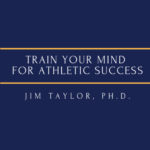Dancers have been training for many years and are now physically, technically, and psychologically ready for the performance. They have laid the foundation that will allow them to perform at their highest level. Now all that remains is for them to prepare specifically for the upcoming performance. The following is a compilation of various techniques from discussions with top dancers, instructors, and choreographers. Though there are many ways to prepare for a performance, all of these have one thing in common: they work for many top dancers. Dancers can try them out and find the ones that work best for them.
There have been weeks and months of rehearsal, learning the role and refining technique. As the performance date approaches, the emphasis should shift to artistry, interpretation, and feeling of the role. Good sleeping habits are another important part of preparation. With the performance approaching, it is essential for dancers to maintain their discipline in order for them to get the rest they need. It should be noted that fatigue caused by even one night of inadequate sleep can adversely affect a person and takes up to four days for recovery. Particularly if dancers are unusually tired or ill, extra sleep can allow the body to recuperate. Also, it is the sleep two nights before a stressful activity that is the most important for being rested on the day of the performance. So if dancers are performing on Saturday, they should be sure to sleep well on Thursday.
With the performance nearing, it is valuable to become familiar with the performance space. Dancers should run through the performance in the new space. They can get a good feeling of the dances in that space and use imagery to rehearse and heighten the familiarity of the performance. Remember, “familiarity enhances performance”.
It is also time for dancers to begin a routine that can be used prior to every performance. Mental imagery can be a useful tool in preparation. First, just before dancers go to sleep, they can imagine themselves performing the way they want. This allows them to go to sleep feeling relaxed and confident. Then when they rise in the morning, they can repeat the imagery. The imagery will build self-confidence, get their adrenaline flowing, and focus their mind on the performance.
Pre-performance eating habits will also affect dancing. Dancers should eat lightly throughout the day and allow two to three hours for digestion. Eating too much or too soon before a performance will cause energy to be diverted away from the muscles to the stomach, thereby interfering with the body’s ability to perform at its highest level.
A thorough physical warm-up is critical. Dancers can not perform at their best when their bodies are cold and tight. In addition, adequate exercise helps injury prevention by increasing circulation, flexibility, and muscle efficiency. Also, dancers who are properly warmed up will feel more relaxed and self-confident.
Dancers should arrive at the theater with plenty of time for performance preparation including warm-up, costume, make-up, and personal private time. Rushing through preparation will tend to increase anxiety and inhibit concentration. As much as two to three hours should be set aside for preparation.
Just prior to the performance, dancers should give themselves time for final preparation. Dancers should develop their own personal routines that fit their individual needs. These routines could include final stretching, make-up refinements, and last moment review of choreography.
With the performance imminent, dancers can do their final mental preparation. They can think positively and remind themselves of the important aspects of the performance. Lastly, they can wait for their cue, stop thinking, and dance.
The performance day does conclude after the dancers have taken their final bow. After any performance, emotions such as joy or disappointment arise. It is important to realize these feelings and allow them to run their course. Suppressing them will only cause anxiety and frustration.
An objective evaluation of the performance is also useful. Considerable knowledge about both the positive and negative aspects of dancers’ performances can be gained that may aid the dancer and the choreographer in improving their subsequent performances. This evaluation should be conducted soon after the performance so the impressions are still fresh in their minds. What they did right, what they did wrong, what changes, if any, need to be made, are a few of the questions that should be asked.
By following this pre- and post-performance routine, dancers can be sure that they are maximally prepared for every performance. In addition, this practice will contribute to a higher level of performing and greater consistency from performance to performance.






